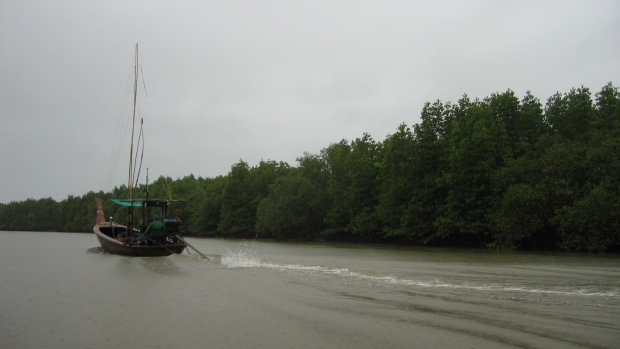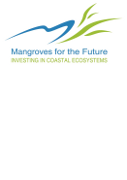Grants :: Small Grant Facilities :: Participatory rehabilitation and conservation of aquatic habitats at Mae Nang Khao
Participatory rehabilitation and conservation of aquatic habitats at Mae Nang Khao

Patrol area of community conservation area, Thailand © SSereepaowong , 2009
Objectives
This project aimed to use participatory approaches to involve communities in protecting, rehabilitating and planning the sustainable use of coastal resources.
Background
The village of Tung Rak is located in a mountainous forest area on Thailand’s north Andaman coast, in the sub-district of Mae Nang Khao. After the 2004 Indian Ocean tsunami, displaced coastal families migrated into the village area and established new homes.
The nearby ecosystem of Mae Nang Khao mountain is under threat. This area covers about 3,520 hectares of national forest reserve land, lying unprotected outside the region’s major national parks and wildlife sanctuaries. The major threats to the forests of Mae Nang Khao include clearing for cultivation, mainly of rubber and fruit trees, and illegal logging and hunting. Six other communities share this ecosystem.
The Mangrove Conservation Group of Mae Nang Khao was originally established in 2005 as the Mangrove Resources Management Group of Tung Rak, with support from government agencies aimed at encouraging local participation in conserving mangroves.
Target beneficiaries
One hundred households (out of 250) who earn their living from fishing and farming.
Outputs
- Releasing of over 11,000 juvenile fish in a protected mangrove area of 10 hectares.
- Reforestation of about 32 hectares of degraded forest with 9,000 mangrove plants.
- Reduction of destructive fishing methods in the project area.
Accomplishments and challenges
This project paved the way for close cooperation and mutual support between government agencies and project beneficiaries. The stakeholders affirmed the project’s contribution to enhancing collective efforts focused on environmental conservation, an activity that the community values especially after the experience of the 2004 tsunami.
The project established regulations for communities to use and protect local mangroves collectively. A mangrove area of about 2,400 hectares was zoned as a habitat for juvenile fish and other aquatic animals. Another area of similar size was zoned as a community forest.
Challenges
The grantees identified poor weather conditions as a major cause of delay in project activities.
Contributions to cross-cutting themes
Communications
The project made efforts to keep communities informed about its activities by using available communication facilities such as the village’s public loudspeaker, and by organizing public village meetings.
Lessons Learned
Participatory processes are an imperative for conserving the environment and natural resources.
Project Facts
Country
Location
Ban Tung Rak, Mae Nang Khao, Kuraburi, Phang Nga, Thailand
Topic
Duration
1st May 2009 to 30th Nov 2010
MFF Grant Amount
US$9,164
Co-financing Partner
The participating communities made cash and in-kind contributions of US$250 and US$2,334 respectively.
Implementing Partner
Mr Suchart Mittulakarn
Project Coordinator
Mae Nang Khao Mangrove
Conservation Group
42 Moo 6, Office of Kamnan Tambon
Mae Nang Khao, Kuraburi,
Phang Nga 82150, Thailand
Tel: +66 87 2672710
Email: nadia.ooy@hotmail.com
Related Publications

Participatory Rehabilitation and Conservation for Aquatic Animals Habitat of Tambol Mae Nang Khao
Author: MFF Thailand
Posted on: 4th Dec 2013
Category:
Size: 415 KB
